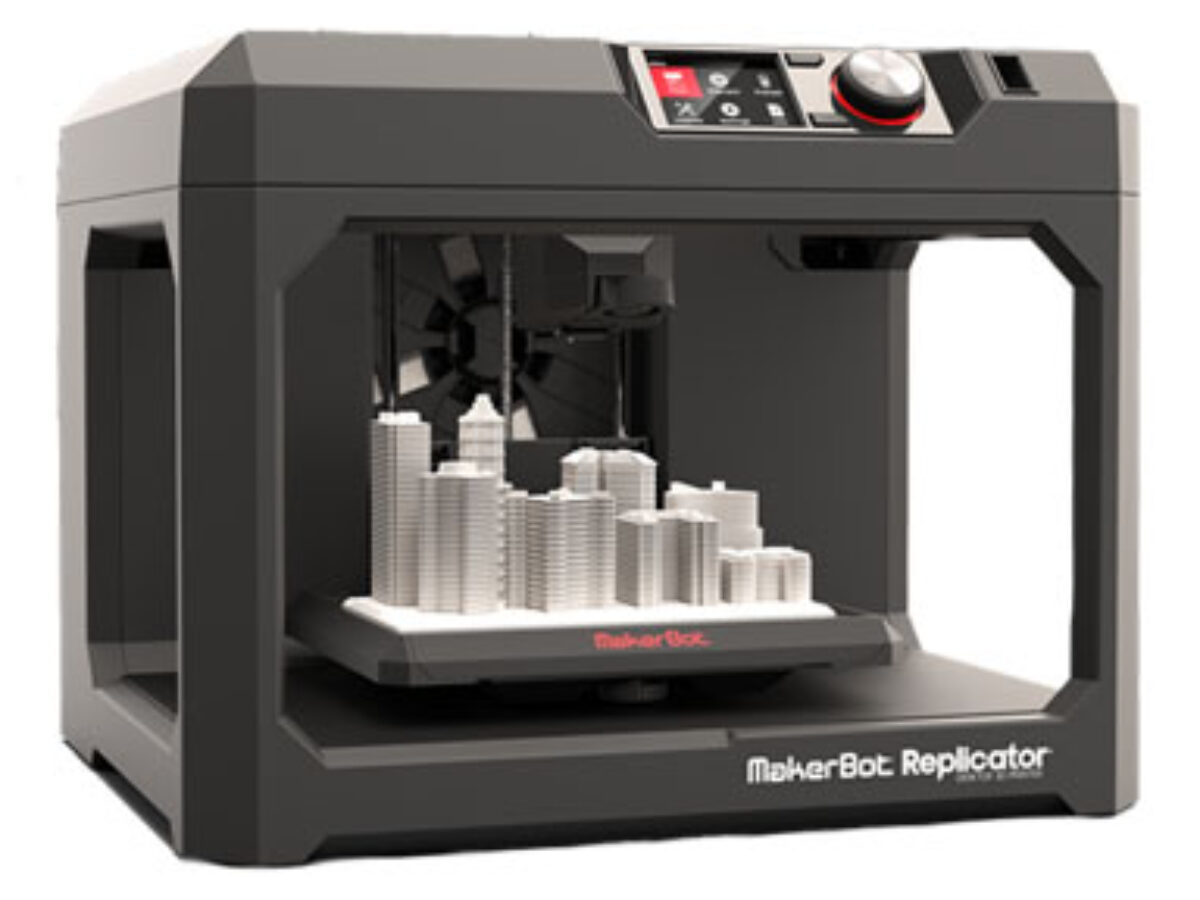Compare Replicator Plus vs K1 Max
Comparison between the best 3D printers
Choose the best 3D printer at the best price. The cheapest 3D printers are here.
Buy a 3D printer here with 3D Fila.
 |
 |
|
| Model | Replicator Plus |
K1 Max[BUY K1 Max] |
| Printing Material | Filament | Filament |
| Buy Filament for Makerbot Replicator Plus | Buy Filament forCreality 3D K1 Max | |
| Estimated price | $2099,00 | $1300,00 |
| Manufacturer | Makerbot | Creality 3D |
| Release Year | 2016 | 2023 |
| Print Volume [mm] | 165x295x195 | 300x300x300 |
| Printer Size [mm] | 410x528x441 | 435x462x526 |
| Weight [kg] | 18,3 | 18 |
| Power Loss Recovery | YES | YES |
| Enclosed printer | NO | YES |
| Bed Leveling | Automatic | Automatic |
| Filament End Sensor | YES | YES |
| Bed type | Heated | |
| Power supply system | Bowden | Direct Drive |
| Standard nozzle | 0,4 | 0,4 |
| Maximum Nozzle Temperature [°C] | 230 | 300 |
| Maximum Bed Temperature [°C] | 100 | |
| Maximum printing speed [mm/s] | 150 | 600 |
| Filament holder | YES | YES |
| Camera for supervision | YES | YES |
| Recommended filaments | PLA | ABS, PLA, PETG, TPU, PA, ASA, PC, PLA-CF, PA-CF, PET-CF |
| Recommended slicers | MakerBot Print Software | Creality Print, Cura, Simplify, Slic3r, IdeaMaker e outros |
| Maximum Resolution [mm] | 0,1 | 0,1 |
| Processor | ||
| Display | Display touchscreen 4,3'' | |
| Power Supply | 110/220V / 240W | |
| Connectivity | USB / Wi-Fi | USB / Wi-Fi / Ethernet |
| Operating systems | Windows, Mac, Linux | Windows, Mac, Linux |
| Date of registration in the system | 2022-11-15 | 2023-12-01 |
| Release date | 2016 | 2023 |
| Extra features | The Replicator Plus printer is easy to use and has very good print quality. Its software is user-friendly and powerful, with USB, Ethernet, Wi-Fi and support for printing via pen drive. With a safe design for an open frame printer, it is relatively quiet. The Smart Extruder+ detects filament end and pauses printing automatically, in addition to notifying via apps. It has a large print volume, with a non-heated and coated print bed for easy removal of parts. It also has a webcam for remote monitoring of prints. | The Creality K1 Max stands out as a fast Core XY 3D printer with a large build volume of 300 x 300 x 300 mm. It is fully enclosed and equipped with AI sensors to prevent print failures. This model has a smooth and flexible PEI build platform, and uses an automatic leveling system with LIDAR, as well as a filament run-out sensor. LAN, Creality Cloud and USB Flash Disk connectivity are available, as well as a 4.3-inch touchscreen interface. The K1 Max is robust, weighing in at 18 kg, and includes an AI camera and limited version of the Klipper firmware. Its motion system is solid and the printer is efficient with high-temperature filaments, but it is not silent. Assembly is 99% complete, requiring only minor adjustments before use. |
| Support for multiple colors and materials (AMS and CFS) | NO | NO |
Notes * |
||
| Cost-benefit | 6 / 10 | 7 / 10 |
| Hardware | 2.5 / 10 | 4.8 / 10 |
| Tela | . | . |
| Print volume | 3 / 10 | 4 / 10 |
| Performance | 1 / 10 | 5 / 10 |
| [BUY K1 Max] |
Conclusion |
| In comparing the MakerBot Replicator Plus and the Creality K1 Max, it's clear that both 3D printers offer unique features catering to different user needs. The Replicator Plus, with its established reputation since its release in 2016, offers good print quality and a user-friendly software interface. However, its build volume is significantly smaller compared to the K1 Max, which was released in 2023 and showcases a more advanced design with a robust Core XY motion system, allowing for larger prints. The K1 Max excels in speed and efficiency, boasting a maximum printing speed that outpaces the Replicator Plus, making it a better option for users looking to maximize their productivity. Additionally, it is fully enclosed, providing an environment conducive to printing with a variety of filaments, including high-temperature materials. The presence of advanced features such as LIDAR leveling and AI sensors enhances reliability and reduces the likelihood of print failures. In terms of connectivity, both printers offer multiple options, but the K1 Max includes the added advantage of Ethernet support, which may appeal to users looking for flexible network solutions. While the Replicator Plus has a higher cost-to-benefit ratio, the K1 Max offers a more modern experience with considerable advancements in technology and functionality. Ultimately, if budget constraints are a significant factor, the K1 Max presents a compelling balance of performance, features, and cost-efficiency for both novice and experienced users alike. In contrast, the Replicator Plus may appeal to those who prefer a well-tested model with a simpler setup and established capabilities, albeit at a higher price point. Overall, the choice between these two printers largely depends on the user's specific needs, project types, and budget considerations. |

